DROPS Brushed Alpaca Silk
A luxurious blend of brushed alpaca and mulberry silk
from:
2.49€
2.50£
Content: 77% Alpaca, 23% Silk
Yarn Group:
C (16 - 19 stitches)
/ 10 ply / aran / worsted
Weight/length: 25 g = approx 140 m
Recommended needle size: 5 mm
Knitting tension: 10 x 10 cm = 17 sts x 22 rows
Care: Hand Wash, max 30°C / Dry Flat
Made in: Peru
Raw material origin: Alpaca from Peru, silk from China
This yarn has an Oeko-Tex® certification (certificate number 23.HPE.36896), Standard 100, Class II from the Hohenstein Institute. This means that is has been tested for harmful substances and is considered safe in human-ecological terms. Class II means the yarn is suitable to come in direct contact with the skin to a large extent, such as blouses, shirts, mattresses, etc.
A luxurious yarn in an exclusive mix of brushed, superfine alpaca and subtle, shiny silk - DROPS Brushed Alpaca Silk is super soft and has a sophisticated shade card ranging from soft beige and gray hues, to gorgeous reds and purples.
Being feather light and surprisingly warm, DROPS Brushed Alpaca Silk is suitable for both small and large garments, and it can be knitted relatively fast on larger needles. This yarn is also great as an effect yarn, so try working it together with other qualities for extra soft and lovely results.
Read more about our products' sustainability here
Please be aware that the colours shown may vary from screen to screen in the same way that shades may vary slightly from dye lot to dye lot.
First of all, consider just airing the garment, instead of washing it. If you still desire to wash it, here are some guidelines:
- Hand wash at 30ºC - separately - with wool detergent without enzymes or optical brighteners.
- Don’t let the garment soak. Move the garment gently back and forth, do not rub or squeeze it.
- Rinse the garment until the rinse water is completely clear, making sure the water temperature stays uniform.
- Do a light centrifugation of the garment (about 800rpm), choosing a program that DOES NOT take in water at the start. Or press carefully the water out of the garment with a dry towel. The garment shouldn’t be twisted or rolled.
- To dry the garment, shape it and lay it flat - do not hang - ideally on a warm bathroom floor or on top of a drying rack in a room with good air circulation. Never dry the garment in direct sunlight.
- Don’t tumble dry.
Note: If you are washing a project made with this yarn combined with another, the general guideline is to follow the washing instructions for the most delicate of the yarns you are working with.
Do you have a question about this yarn?
See a list of frequently asked questions (FAQ) about our yarns.
1) What type of fibers make the DROPS yarns?
Yarn can be made from a large number of natural and synthetic fibers. DROPS carries mainly yarns made from wool, cotton, alpaca, linen, mohair and silk. Each fiber type has its own qualities, and they are often mixed to take advantage of the best properties of each one. Coarse yarn has the advantage of being stronger and more durable, and finer fibers offer more softness and comfort. Here a bit about the main fibers we carry:
Alpaca:
Alpaca fleece is the natural fiber harvested from an alpaca, and it is similar in structure to sheep wool fiber. Its softness comes from the small diameter of the fiber, similar to merino wool. It is a soft, durable, luxurious and silky natural fiber. Yarn made from alpaca fibers does not felt or pill easily, and it can be light or heavy in weight, depending on how it is spun. While similar to sheep’s wool, it is warmer, not prickly, and has no lanolin, which makes it hypoallergenic. Alpacas come in 22 natural colors, with more than 300 shades from a true-blue black through browns-black, browns, white, silver and rose-greys.
Mohair:
This fiber comes from the Angora goats, and it's considered a luxury fiber. Mohair yarn is warm as wool, but much lighter in weight; it is durable, dyes well and does not felt easily. Mohair fibers have also a distinctive luster created by the way they reflect light. Despite being a hard fiber, mohair is usually spun into a very fluffy yarn, resulting in airy and lustrous garments.
Wool:
The wool fibers come from the skin of sheep and are relatively coarse fibers. Two striking characteristics of wool are its susceptibility to heat and its felting property, which is caused by the scales on the surface. Depending upon the breed of sheep, the appearance of the wool varies.
Wool from Merino sheep is considered the finest type of wool, having as characteristics that is finely crimped and soft. All the Merino wool in the DROPS yarns has its origins in South America, coming from sheep that have not been subject to Mulesing.
Pure new wool is wool made directly from animal fleece, and not recycled from existing wool garments.
Machine washable wool is wool treated chemically to minimize the outer fuzzy layer of the fibers, and be therefore fitable for machine wash (see Superwash).
Silk:
The silk fiber is a fine continuous fiber produced from the cocoon of a moth caterpillar known as the silkworm. While silkworm is cultivated, the wild or tussah silk is obtained from uncultivated silkworm cocoons. Silk fiber is one of the strongest natural fibers and makes a wonderful knitting yarn. It blends really well with other fibers, especially wool. Silk also dyes beautifully with natural dyes.
Vegetable fibers:
There are several varieties of vegetable fibers, found in the cell walls of plants or vegetables. Of all the varieties, two are recognized as major knitted or textile fibers. They are cotton and linen.
Cotton is the fiber surrounding the seeds in a cotton pod, and it is almost pure cellulose. Cotton is usually white in color but there are green and brown varieties as well. The cotton fiber is most often spun into yarn or thread and used to make a soft, breathable textile that is good for summer clothing and accessories, making a weaker yarn than silk or linen but stronger than wool.
Mercerized cotton is cotton that has been through a mercerization treatment. This treatment gives cotton fabrics and threads a lustrous yarn that is more lustrous than conventional cotton. It is also stronger, takes dye a little more readily, makes the yarn more resistant to mildew and reduces lint. It also may not shrink or lose its shape as much as "regular" cotton.
Linen is a fiber derived from the stalk of the flax plant that is durable and stronger than any other fiber. The linen fiber is relatively soft, straight and lustrous and becomes more beautiful with age. Linen is more comfortable to wear in hot temperatures than cotton, due to the fact that it absorbs moisture better and dries more quickly.
Other materials used in our yarns include synthetic fibers such as acrylic, viscose, polyamide (nylon) and polyester. These fibers are used mostly to give strength to a yarn (like our sock yarn, DROPS Fabel) or a special kind of structure (like our blown yarn, DROPS Air).
The polyamide fibre, commonly known as nylon, is very strong, durable, lightweight, easy to care for (can be machine washed and dried), and elastic, which makes it perfect for blending with other fibres to produce hard-wearing yarns like sock yarn.
Compared to polyester, polyamide is softer and more flexible, but it also absorbs more water and dries slower.
3) What type of information can I find on the DROPS yarn labels?
All DROPS yarn labels include information about fiber content (wool, cotton, etc.), weight in grams and ounces, length in meters and yards, washing instructions and symbols (explained here), color number, dye lot number and yarn group information.
4) What are the DROPS yarn groups?
All DROPS yarns are classified into 6 different thickness groups (A to F). Yarns in a same group have similar knitting tension/gauge, and can therefore be interchanged in patterns; however the length may be different, so when substituting always calculate the amount of meters/yards needed for the pattern to know the amount of yarn you need to get.
5) Can I use a different yarn than the one mentioned in the pattern?
Yes, as long as the yarn can be worked in the same knitting tension/gauge. Always swatch to make sure you get the same number of stitches in width and rows in height as given in the pattern.
Remember that different yarns with different textures, will give the garment different looks. The yardage/length may also be different, so when substituting always calculate the number of yards needed, in order to know the amount of yarn you need.
Read more about how to calculate the amount of an alternative yarn - and how to replace 1 thread of a yarn with 2 or more of another, here.
6) What does it mean when a yarn is “Superwash”?
A superwash wool is a special wool product that has been treated or processed in a way that allows it to be machine washable. Many people are afraid to work with wool because it is so easy to shrink (though some shrink wool on purpose) and superwash wool can allow them to work with great fibers without worry. (Read more here).
7) What does “Oeko-Tex® certified” means?
The Oeko-Tex® Standard 100 was introduced at the beginning of the 1990s as a response to the needs of the general public for textiles which posed no risk to health. The Oeko-Tex® Standard 100 is a globally uniform testing and certification system for textile raw materials, intermediate and end products at all stages of production. The test for harmful substances comprise substances which are prohibited or regulated by law, chemicals which are known to be harmful to health, and parameters which are included as a precautionary measure to safeguard health.
For more info go to www.oeko-tex.com
10) How accurate are the colours on the shade cards online?
When obtaining images for the shade card, we do our best to achieve the highest level of color accuracy. Unfortunately, we cannot guarantee how images will appear on your computer screen. Every monitor displays color differently, some colors might look darker than they really are, and some colors might be more saturated on some screens. If you experience that many of the yarn colors looks different on your screen than the actual color of the skeins, you can adjust the setting on your monitor.
11) What is a micron? What does super fine / extra fine mean?
The fineness of yarn fibers is measured in microns (thousands of millimeters). Super fine alpaca wool is 26-28 microns. Fine merino wool is less than 21.5 microns and extra fine merino is under 19.5 microns. The less microns the softer and more delicate a quality can be, the more microns the more hard wear the quality will be.
The reason why the microns in a yarn’s fibers are important is that the yarn will eventually become something else, and how delicate or coarse a yarn is will determine in part what we use it for. That’s why we recommend the softest yarns (like DROPS Baby Merino) for baby clothing, or why we choose to use a more hard wear yarn like DROPS Snow, for a seating pad or slipper.
12) Why are the colours in my skeins of print yarn different?
The reason why two skeins of a same print yarn look different can be 1) that both skeins are part of different dye lots; 2) that the skeins have been dyed using a technique called "magic print" (the one used for example in DROPS Delight), which provides unique patterns and smooth colour transitions to each skein, meaning also that within one dye lot, lighter or darker varieties might appear. This is no fault or defect, but part of the yarn's character.
13) My store doesn’t have the colour I want, what can I do?
If your DROPS store doesn’t have the yarn colour you want, try contacting a DROPS Super Store (the ones with the golden badges) - they will make sure to get a hold of the colour even if they don’t have it in stock themselves. See a list of all DROPS stores here.
14) Where can I find a specific dye lot of a colour?
Always try contacting your DROPS store first. If they do not have the dye lot you want we recommend you to ask other knitters and crocheters in the DROPS Workshop in Facebook or Ravelry, which may have the dye lot in their stash and might be willing to part from it.
Yarn sheds because there's not enough twist to hold all of the fibers together. All yarns have excess fibers (from production) that might come off as lint or shedding, in varied degrees that depend on how the yarn is spun. Brushed yarns ("hairier" yarns) like DROPS Melody, have more of these loose fibers than other yarns, and therefore shed more. Shedding also depends on what is worn under or over the garment, and whether this pulls at the yarn fibers. It’s therefore not possible to guarantee that there will be no shedding.
Below are some tips on how to get the best result when working with hairier yarns:
- When the garment is finished (before you wash it) shake it vigorously so the looser hairs come off. NOTE: do NOT use a lint roller, brush or any method that pulls at the yarn.
- Place the garment in a plastic bag and put it in your freezer - the temperature will cause the fibers to become less attached to each other, and excess fibers will come off easier. Leave in the freezer for a few hours before taking it out and shaking it again.
- Wash the garment according to the instructions on the yarn label. Garments worked with hairier yarns usually need to be shaken once dry after washing, so that the hairs rise and any excess fibers can come off.
Pilling is a natural process that happens to even the most exclusive of fibers. It's a natural sign of wear and tear that is hard to avoid, and that is most visible in high friction areas of your garment like a sweater's arms and cuffs.
You can make your garment look as new by removing the pilling, using a fabric comb or a pill/lint remover.
How can I replace this yarn?
If you are looking to replace this yarn with another DROPS yarn, you can use another yarn within the same yarn group, or try our yarn converter!
Comments / Questions (430)
![]() Manuela wrote:
Manuela wrote:
J'ai enfin décidé de finir un ouvrage commencé il y a ...longtemps... Je me rends compte que je vais être un peu juste en quantité de laine...Je le fait en Alpaca silk coloris 9, qui apparemment n'existe plus...auriez vous connaissance d'un revendeur qui en aurait encore? Ou alors quel autre fil puis je utiliser et surtout quel coloris sera le plus proche? Merci
28.10.2024 - 15:07DROPS Design answered:
Bonjour Manuela, vous pouvez contacter individuellement les différents magasins DROPS pour vérifier s'ils en ont encore en stock ou bien demander à d'autres tricoteuses dans notre DROPS Workshop si l'une d'elles peut vous dépanner. Bon tricot!
28.10.2024 kl. 16:39
![]() Jacky Rowlins wrote:
Jacky Rowlins wrote:
Do you give samples so I can match the colour exactly with a skirt for my granddaughter? I would like cerise sample of brushed alpaca silk and magenta Drops Air to compare? thanks
11.10.2024 - 16:40DROPS Design answered:
Dear Jacky, this webpage is only for showcasing the patterns and the yarns. You can contact your closest DROPS store and they should be able to help you finding a colour match, in person. You can check our UK stores here: https://www.garnstudio.com/findastore.php?id=19&cid=19. Happy knitting!
13.10.2024 kl. 19:45
![]() Wolfi wrote:
Wolfi wrote:
Hallo, ich bin am überlegen dem brushed alpaka silk garn eine jacke im reliefmuster zu häkeln - ich bin mir aber unsicher ob der Stabilität. Wie sehr filzt diese wolle und wie gut hält sie ihre form? Oder ist es besser ich entscheide mich für eine andere wolle? Möchte mich nur ungern hinterher ärgern, aber die farbvarianten sind leider schwer zu schlagen 😅
17.09.2024 - 23:59DROPS Design answered:
Liebe Wolfi, Brushed Alpaca Silk ist sehr weich ist und hält ihr Form nicht, es sei denn Sie häkeln es mit einem unserer anderen Garne zusammen, wie wir es hier getan haben. Viel Spaß beim Stricken!
18.09.2024 kl. 15:51
![]() Cecilia wrote:
Cecilia wrote:
Hi, I have a couple of questions: 1) I want to make an ultra lightweight sweater using Alpaca Silk or the Kid Silk, which will be a better choice in keeping the body warm? 2) Is there a pattern using just Alpaca Silk or Kid Silk so that I can estimate the skeins needed? 3) Since the Alpaca Silk/Kid Silk are such thin yarns, using purely these yarns will mean I should combine 3 or 5 threads for each stitch? Which is more ideal?
09.09.2024 - 04:01
![]() Marianna wrote:
Marianna wrote:
Guten Tag, ich verstehe nicht, wieso die Violetttöne aus dem Sortiment verschwunden sind. Ich empfinde es als großen Mangel! Ich hoffe, die kommen bald wieder und möglichst in verschiedenen Varianten wie es bei rosa, blau, grün und beige der Fall ist.
07.09.2024 - 08:00DROPS Design answered:
Liebe Marianna, danke für den Hinweis, Ihre Anfrage wurde weitergeleitet. Viel Spaß beim Stricken!
09.09.2024 kl. 11:14
![]() Flo wrote:
Flo wrote:
Combien de pelotes faut il pour faire un pull de femme taille 36-38? Merci.
17.08.2024 - 21:17DROPS Design answered:
Bonjour Flo, tout va dépendre de la forme souhaitée (largeur, longueur), du point utilisé et aussi de l'échantillon; découvrez ici tous nos pulls femme tricotés en Brushed Alpaca Silk. Bon tricot!
19.08.2024 kl. 07:04
![]() Anne wrote:
Anne wrote:
Hej - kan man strikke med kun en tråd på pind 7? Eller skal man bruge 2 tråde?
06.07.2024 - 17:56DROPS Design answered:
Hei Anne. Det kommer an på hva som står i oppskriften. Sjekk strikkefastheten og anbefalt pinne str. i den oppskriften du skal strikke. I mange DROPS oppskrifter der det er brukt DROPS Brushed Alpaca Silk og der det er en strikkefasthet på 17 masker x 22 pinner (på 10 x 10 cm) er det brukt pinne 5 - med 1 tråd. Mens ved 2 tråder er det ofte brukt pinne nr. 8, og da er strikkefastheten gjerne 11 masker x 15 pinner. mvh DROPS Design
08.07.2024 kl. 07:28
![]() Monica wrote:
Monica wrote:
Om man vil strikke med dobbel tråd,hva blir strikkefasthet?
27.06.2024 - 09:27DROPS Design answered:
Hei Monica. Det kommer an på hvilken pinnestr. du skal strikke med. Om det f.eks i et plagg har en strikkefasthet på 11 masker x 15 pinner med 2 tråder (= 10 x 10 cm) kan vi ha brukt pinne 8, men for å få denne strikkefatheten må du kanskje bruke en mindre etter større pinne. Husk pinne str. som er oppgitt i en oppskrift er kun veiledende. Du må bruke den pinne str. som gir deg den strikkefastheten som er oppgitt i en oppskrift. mvh DROPS Design
01.07.2024 kl. 07:21
![]() EL wrote:
EL wrote:
Hei! Elsker dette garnet, men savner en kald, mørk gråfarge - en mellomting mellom farge 03 og sort, muligens noe lignende askegrå i Kid Silk. Noen planer om å utvide fargekartet?
23.06.2024 - 11:00DROPS Design answered:
Hei EL. Takk for ditt innspill, ditt ønske er oversendt design avd. Ny farger blir vurdert fortløpende. mvh DROPS Design
24.06.2024 kl. 07:31
![]() Ella wrote:
Ella wrote:
Hi, I'd love to use your Brushed Alpaca Silk for a lace weight pattern. Is this yarn compatible or what yarn weight should I look for in a pattern to use this yarn?
13.05.2024 - 18:30DROPS Design answered:
Dear Ella, you will find all our patterns with lace using DROPS Brushed Alpaca Silk here; one of them might inspire you. Happy knitting!
14.05.2024 kl. 08:01
![]() Ingrid wrote:
Ingrid wrote:
Jeg vurderer å bruke dette garnet, men skulle gjerne visst om det er superwash-behandlet eller ikke. Ønsker et mest mulig miljøvennlig garn, også mtp produksjonen. Mvh, Ingrid
28.04.2024 - 12:02DROPS Design answered:
Hei Ingrid. DROPS Brushed Alpaca Silk er ikke superwash behandlet. Om du er på hjemmesiden vår og under fargekartet til DROPS Brushed Alpaca Silk, scroll ned og det finner du mer informasjon om garnet, der er det også en link som du kan lese mer om våre produkters bærekraftighet. mvh DROPS Design
29.04.2024 kl. 06:55
![]() Gudrun wrote:
Gudrun wrote:
Hallo, ich habe drei Kleider und zwei Pullis aus der Brushed Alpaca Silk gestrickt, in verschiedenen Farben und Formen. Beim Tragen werden sie aber immer weiter und fallen teilweise nicht mehr schön. Was habe ich denn falsch gemacht bzw. was muss ich tun, damit die Teile in Form bleiben? Ansonsten fühlen sich die Sachen beim Tragen super an, ganz weich und leicht.
09.04.2024 - 16:18
![]() Christiane wrote:
Christiane wrote:
Hei, har kjøpt Alpaca Silk i fargen 17 lys lavendel. Bildet på nettet er mye mer lilla enn garnet er i realiteten, det er mer blått. Jeg ønsker noe mer lilla (mer rød andel). Det finnes 2 lilla farger i Kid Silk kvaliteten: 11 - lilla og 55 - tåkete syrin som ser like ut. Er de like blåe som lys lavendel i Alpaca Silk eller er de mer lilla? Mange takk.
04.04.2024 - 19:55DROPS Design answered:
Hei Christiane. Farger kan avvike noe avhengig av skjermtype og innstillinger, men når jeg sammenligner et nøste Brushed Alpaca Silk farge nr. 17 på diverse PC skjermer og mobilskjermer, samsvarer fargene veldig godt. Om du ønsker en mindre blålig farge i Kid-Silk er farge 55 tåkete syrin et bedre valg enn farge 11 lilla. mvh DROPS Design
08.04.2024 kl. 09:52
![]() Nathalie wrote:
Nathalie wrote:
Ces 2 fils n'ayant pas la même longueur, faut-il prendre des quantités égales dans les 2 laines ?
07.03.2024 - 18:52DROPS Design answered:
Bonjour Nathalie, quand vous tricotez 2 laines ensemble, vous devez calculer le métrage total nécessaire pour avoir le même dans les 2 laines, en prenant en compte le métrage de chaque pelote puis en divisant par le nombre de grammes de la pelote pour savoir le nombre de pelotes nécessaires; retrouvez plus d'infos ici; votre magasin saura également vous aider et vous conseiller si besoin, même par mail ou téléphone. Bon tricot!
08.03.2024 kl. 08:54
![]() Nathalie wrote:
Nathalie wrote:
Bonjour. Pour réaliser un pull taille 38 avec brushed alpaca + baby merinos aiguilles n°6, combien faut-il de pelotes dans chacune des laines ? Merci pour votre réponse
07.03.2024 - 15:06DROPS Design answered:
Bonjour Nathalie, avec cette association, on obtient l'épaisseur d'un fil du groupe de fils D - cf cet exemple. Retrouvez ici tous nos pulls tricotés dans ce type de tension. Bon tricot!
07.03.2024 kl. 15:54
![]() Caitlin Moor wrote:
Caitlin Moor wrote:
Beste DROPS, Plaatje 2 laat volgens de beschrijving bollen brushed alpaca silk 15, 4 en 6 zien. Echter is de kleur 6, koraal, een compleet andere kleur dan de bol die op plaatje twee kleur 6 zou moeten zijn. Kunnen jullie mij helpen erachter te komen welke kleur de derde bol op plaatje 2 werkelijk is?
03.03.2024 - 16:00DROPS Design answered:
Dag Caitlin,
Ai, dat klopt inderdaad niet en ik zal het doorgeven om aan te passen. Helaas weet ik niet zeker welke kleur het wel zou moeten zijn omdat hij anders is dan beige, amandel of chocolade. Zodra het aangepast is door de betreffende afdeling zal het wel duidelijk worden.
11.03.2024 kl. 21:32
![]() Anna wrote:
Anna wrote:
Wieviel von diesem Garn benötigt man für einen Damenulli Größe 40?
10.02.2024 - 17:11DROPS Design answered:
Liebe Anna, je nach Schnitt, Muster, Maschenprobe usw kann die Garnmenge etwas unterschiedlich sein, hier finden Sie unsere Anleitungen für Pullover, die im oder mit Brushed Alpaca Silk gestrickt werden. Viel spaß beim stricken!
12.02.2024 kl. 09:37
![]() Arianna wrote:
Arianna wrote:
Hello, do you no longer sell the colour purple for this yarn?
08.02.2024 - 10:40DROPS Design answered:
Dear Arianna, in this page you can see all colours of this yarn that are currently in production. Sometimes, the colour will have a "discontinued" tag, which will mean that the colour is being discontinued and the stock is limited. If a colour is no longer in this list then it means it is no longer produced but you can still contact our DROPS stores to see if they have any leftover stock of this colour in their stores. Happy knitting!
11.02.2024 kl. 20:12
![]() Eva wrote:
Eva wrote:
Hallo, bei der Farbe 15 "helles Seegrün" kann ich bei bestem Willen und Licht keinen Grünstich erkennen, es ist leider einfach nur Babyblau und passt daher nicht.
24.01.2024 - 00:56
![]() Valérie Berger wrote:
Valérie Berger wrote:
Bonjour, Je suis très déçue de ne plus trouver la couleur Purple 09 de la Brushed Alpaca Silk ! Allez vous la rééditer ? Merci par avance pour votre réponse.
18.01.2024 - 16:06DROPS Design answered:
Bonjour Mme Berger, votre remarque a été transférée, merci pour votre fidélité. Bon tricot!
23.01.2024 kl. 07:54
![]() Doris wrote:
Doris wrote:
Kann man die Brushed Alpaca Silk zusammen mit der Glitter verstricken? Sieht das gut aus und läßt es sich gut miteinander verstricken?
17.12.2023 - 12:36DROPS Design answered:
Liebe Doris, ja sicher, Glitter lässt sich gerne mit jedem Garn stricken. Viel Spaß beim stricken!
18.12.2023 kl. 09:44
![]() Charlotte wrote:
Charlotte wrote:
I am hoping to knit the Icy Waves vest using this yarn. The vest pattern originally calls for a strand of PUNA and a strand of KID-SILK to be worked together, but I was hoping to work with just one yarn. The material composition of this yarn is similar to the combination of the other two and both are 10-ply total. Besides accounting for the difference in meters/gram of yarn types is there anything else I should consider? Is this a reasonable substitution?
16.12.2023 - 04:28DROPS Design answered:
Dear Charlotte, you could use Brushed Alpaca Silk but it's very light compared to DROPS Puna, so it won't hang as well as in the picture. The cables won't be as precise; you can see how the cable will look like with Brushed Alpaca Silk here: https://www.garnstudio.com/pattern.php?id=10569&cid=19. Happy knitting!
17.12.2023 kl. 17:46
![]() Aneta wrote:
Aneta wrote:
Czy planują Państwo jakieś dodatkowe kolory w najbliższej przyszłości? W Drops Kid Silk jest dużo pięknych fioletów i wrzosów, a tutaj tego brakuje. Widziałam, że był piękny głęboki fiolet nr 09, ale już go nie ma.
15.12.2023 - 09:28DROPS Design answered:
Witaj Aneto, niestety w tym momencie nie mam takiej wiedzy. Sprawdzaj na naszej stronie, nowe kolory pojawiają się TUTAJ. Pozdrawiamy i dziękujemy za zainteresowanie naszymi włóczkami.
18.12.2023 kl. 08:25
![]() Hélène Pirotte wrote:
Hélène Pirotte wrote:
Bonjour, combien de pelotes sont nécessaires pour un pull taille 38? Merci pour votre réponse.
11.12.2023 - 20:45DROPS Design answered:
Bonjour Mme Pirotte, tout va dépendre de la forme, du point utilisé, de la tension, etc.. retrouvez ici tous nos pulls tricotés en ou bien avec Brushed Alpaca Silk. Bon tricot!
12.12.2023 kl. 09:43








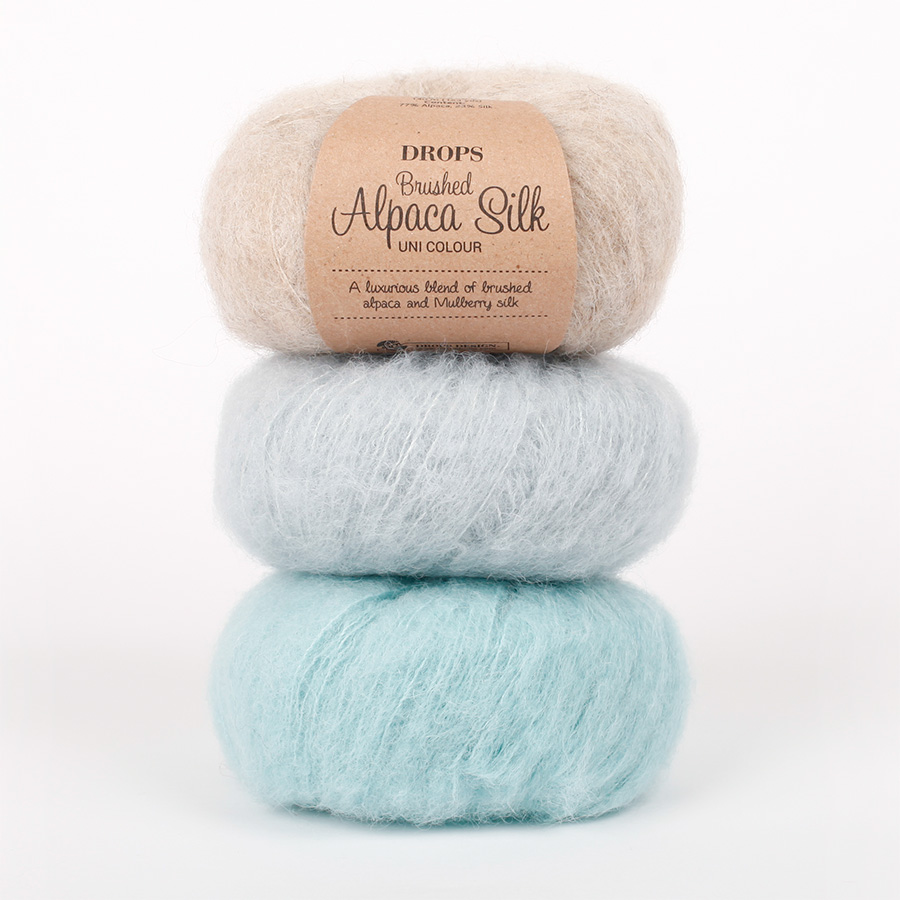
















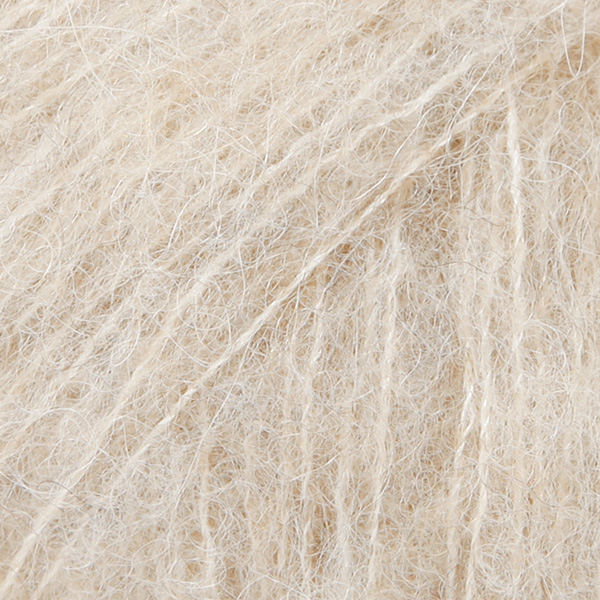

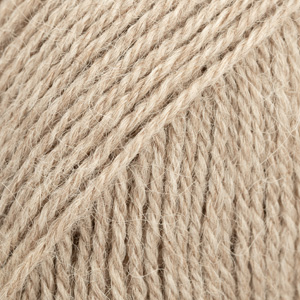
























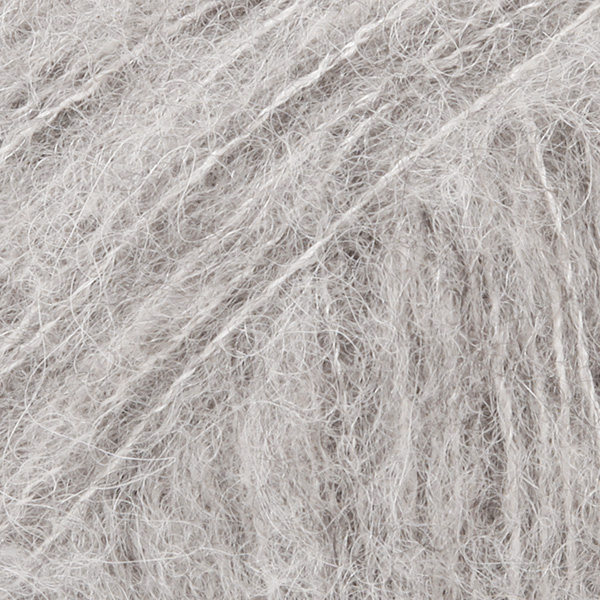



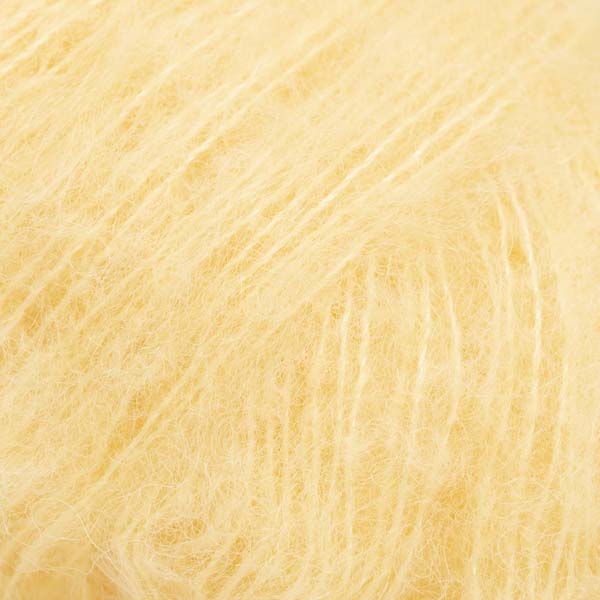






















































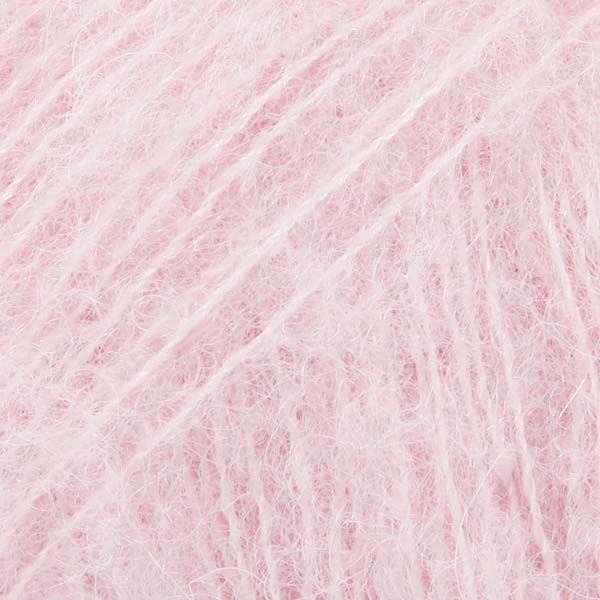








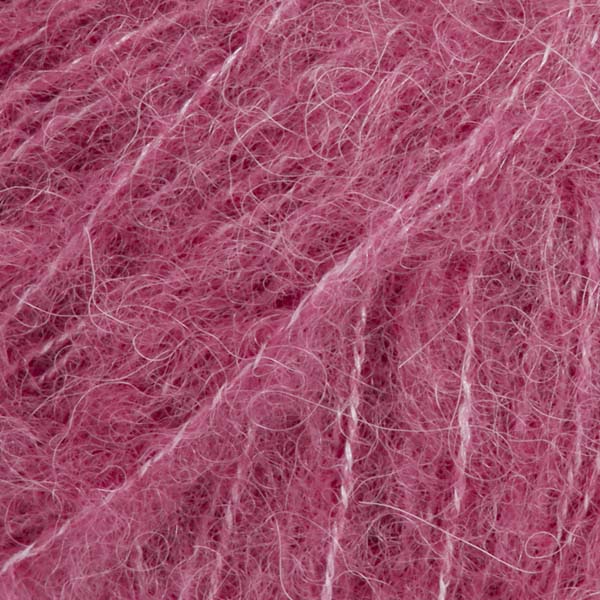




































































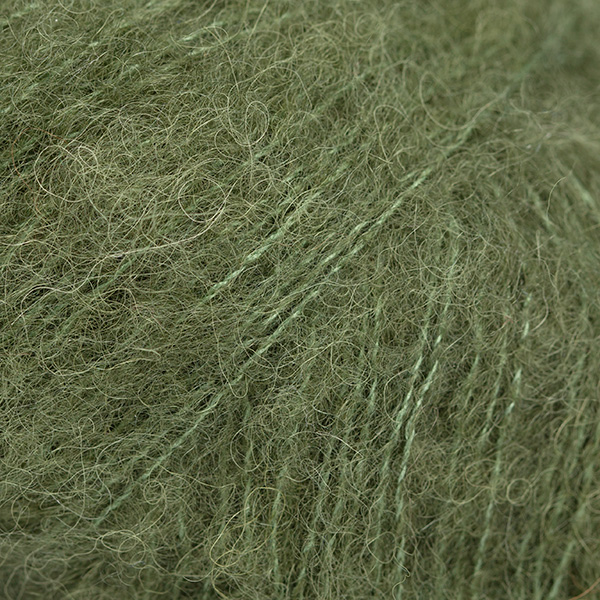




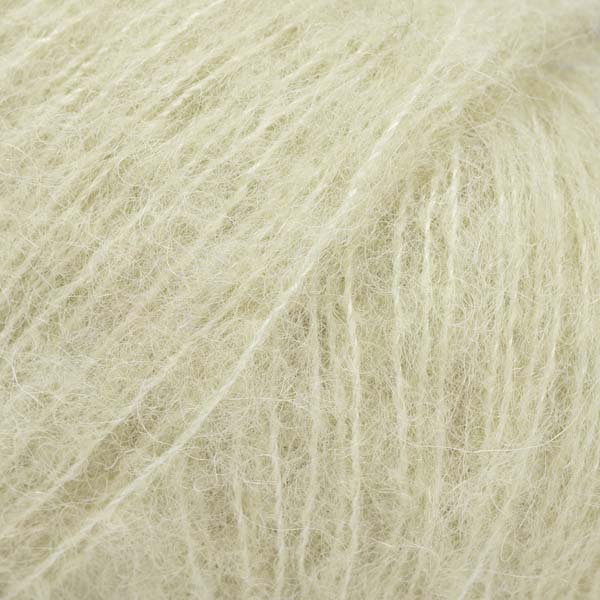


























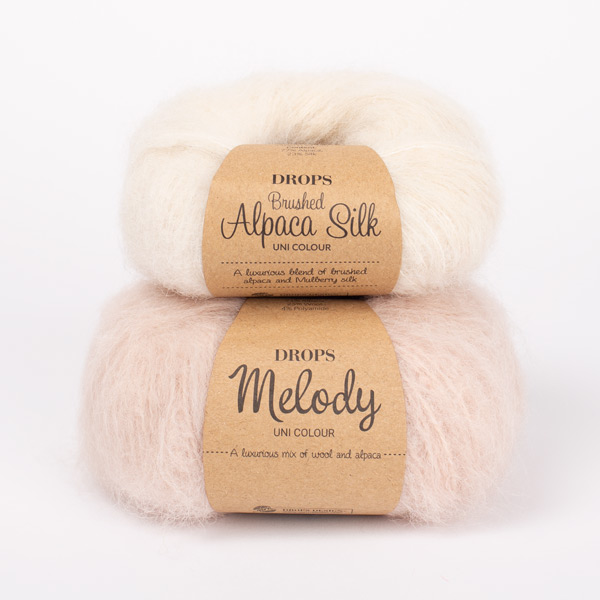
















Ich habe aus dem Garn zusammen mit Baby Merino eine Jacke gestrickt, die wunderbar geworden ist und für die ich viele Komplimente erhalten habe. Leider gab es sehr schnell jede Menge Knötchen, die sich nach Abschneiden mit der Stickschere schnell neu gebildet haben. Jetzt überlege ich, die Jacke nochmal zu stricken, aber mit der Kid Silk. Wie sind da die Erfahrungen mit Knötchen? Und welche Farbe der Kid Silk passt am besten zu Baby Merino in der Farbe Cerise?
03.05.2024 - 23:46